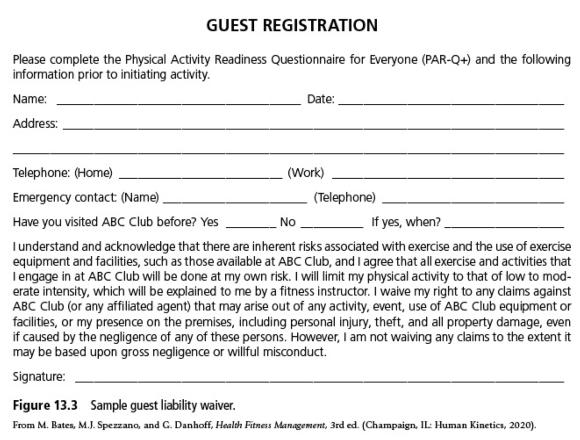The importance of screening guests
This is an excerpt from Health Fitness Management-3rd Edition by Mike Bates,Mike Spezzano & Guy Danhoff.
A constant challenge facing fitness facility managers is screening procedures for guests and prospective members using the facility. Managers must develop a process of registration and guest screening that provides facility personnel with a level of confidence that every guest is low risk. Additionally, this process must guarantee that the guest knowingly assumes all risks related to physical activity within the facility (i.e., an assumption of risk statement). Furthermore, the staff must provide the guest with an orientation of the activity areas and equipment while stressing safety considerations.
During registration and screening, the staff should gather basic personal information in case of an incident or emergency. The information gathered can also be used as a sales tool to identify prospective members. Facilities frequently use a two-part guest registration and screening procedure. The first part is the registration form (see figure 13.3), which includes the guest's name, address, phone number, and emergency contact, as well as an assumption of risk statement. The second part is the health screening form, such as the PAR-Q+, that is also to be signed. Remember that because the PAR-Q+ is a limited screening device, guests should be restricted to low- to moderate-intensity exercise.

Managers must work with their legal counsel to determine a registration and screening procedure, to identify appropriate information that must be gathered, and to create the assumption of risk statement in order to minimize the possibility of untoward incidents and consequent liability. Regardless of whether the guest is accompanied by an existing member, participating in a special event, or sponsored through a cooperative arrangement with a local hotel, business, or organization, the manager must recognize that the standard of care regarding preactivity screening is still in effect.
SHOP

Get the latest insights with regular newsletters, plus periodic product information and special insider offers.
JOIN NOW


